This article will tell you in detail about how to correctly measure the pulse and what are the rates of heart rate, depending on sex and age.
Content of
- Pulse is the norm by age in healthy women: table
- Pulse is the norm by age in healthy men: table
- Pulse is the norm by age in healthy children: table
- Pulse rate in pregnant women: table
- What should be the frequency of beats per minutepulse in a healthy adult person at rest, running, walking, training:
- rate What pulse is normal for a man and a woman at 30, 40, 50, 60 years old?
- Which pulse is normal for a child at 6, 7, 8, 9, 10, 11, 12 years old?
- What is the normal pulse of a teenager at 13, 14, 15, 16, 17 years old?
- Where can I feel the pulse?
- How to measure the pulse on the arm on your wrist yourself and determine the pulse on the carotid artery?
- Video: "How to measure the pulse on its own?"
Pulse is the norm by age in healthy women: table
Every person has a pulse. Understand that this is quite simple, the pulse is the oscillation of the walls of the vessels. There are fluctuations when the heart muscle contracts. By pulse, or rather by its frequency and strength, we can tentatively determine the rhythm of heartbeat, the nature of his work, health and the current state of large vessels.
To determine whether a person is healthy from the first seconds, because a healthy person's heart rate( intervals between heart beats) should be the same and uniform. An abnormal frequency is already a symptom of the malfunctioning of the body, for example, the pathologies of the heart.
To measure the pulse should be correct, you need to find areas on the body in which the oscillations of the vessels are felt very well. It is also necessary to know the values of the measured pulsation, which differs, depending on the age, sex of the person and his type of activity( sports person or person with chronic diseases).
Measure the pulse on the radial artery, which is well probed on the wrist. The measurement time is 30 seconds. If the rhythm is not established during the first 30 seconds, then the pulse should be measured within a minute. If the wrist does not manage to measure the pulse, it can also be felt in the temples.
Pulse in females:
| Age of the woman | Minimum( normal) number of strokes | Average( normal) number of strokes | Maximum( normal) number of strokes | Arterial pressure( normal) |
| 50 | 60 | 75 | 80 | 110-130 |
| 50, 55, 60 | 65 | 75 | 85 | 140-80 |
| 60, 70, 80 | 70 | 80 | 90 | 140-160 |
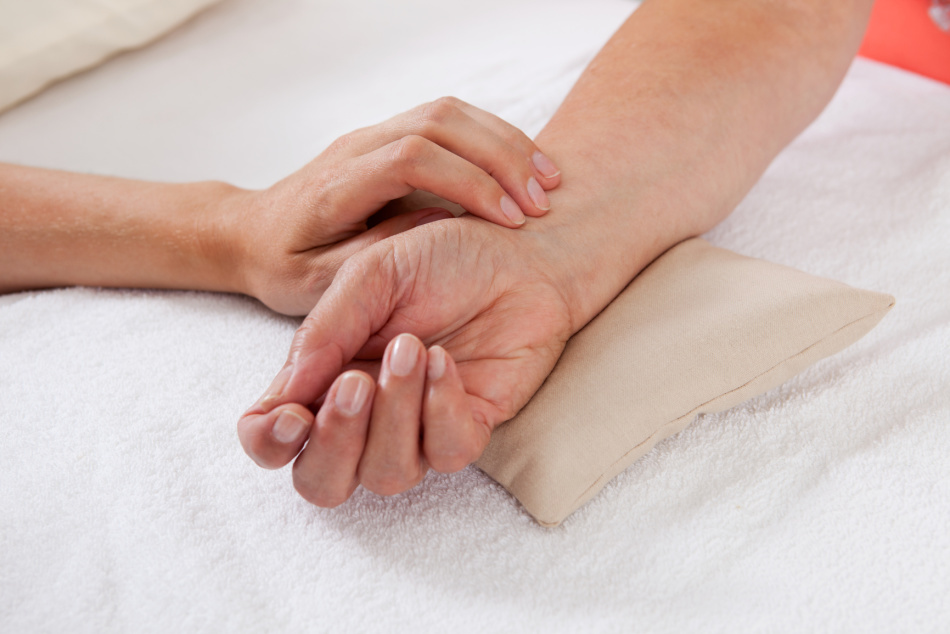 Correct measurement of
Correct measurement of Pulse is the norm by age in healthy men: table
The pulse rate is affected by several reasons:
- Age of the person
- Body position of a person
- Food
- Body temperature
- Physical load
- Stress
- Hormonal background of a person
- Environment
INTERESTING: It is important to know that men have a slightly lower heart rate than women. To be precise, it's about 5 to 8 strokes.
On the male pulse, more precisely, its frequency, a great influence is the age of a man. It is also necessary to take into account the physical state of the health of a man( child, boy, boyfriend) and his physical preparation, meal time( how long he ate) and what he did before measuring the pulse( slept, walked, ran).
| Age of the man | Minimum( normal) number of strokes | Average( normal) number of shots | Maximum( normal) number of strokes | Blood pressure( normal) |
| Up to 50 years | 60 | 70 | 80 | 120-140 |
| 50 to 60 years | 65 | 75 | 85 | 140-80 |
| From 60 to 80 years | 70 | 80 | 90 | 145-165 |
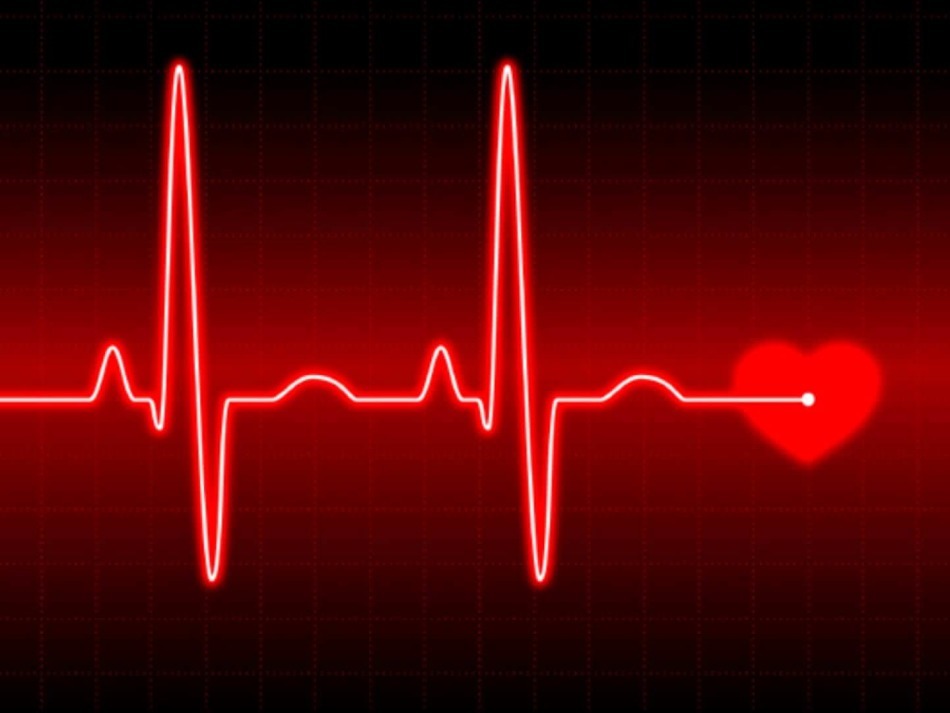 Heartbeat - heartbeat
Heartbeat - heartbeat Pulse is the norm by age in healthy children: table
Before measuring the pulse of a child, everyone should be aware that the frequency of the strokes varies, depending on theage. Children's body, in contrast to adult men and women, grows very quickly and grows up. Also, the indicators can be influenced by the increase in the body weight of the child.
INTERESTING: The indicators and the pulse rate change after the child is 1 month old. Measure the pulse of a child should be much more likely than an adult to determine his state of health. After 1 month of life, the child's pulse decreases and only when he is 12-13 years old, the norms become similar to the norms of an adult.
| Child's age | Minimum( normal) number of strokes | Average( normal) number of strokes | Maximum( normal) number of strokes | Arterial pressure( normal) |
| about 1 month | 110 | 130 | 165 | 60-80 / 85 |
| Up to 12 months | 100 | 130 | 160 | 80-110 |
| About t 12 months to 2 years | 90 | 130 | 150 | 90-110 |
| 2 to 3 years | 90 | 100 | 130 | 90-110 |
| 3 to 4 years | 90 | 100 | 130 | 90-110 |
| 4 to 5 years | 85 | 105 | 125 | 110-120 |
Pulse rate in pregnant women: table
Pregnancy is a special position of a woman that affects her health and well-being. First of all, a woman can feel the heaviness, "jumping out" of the heart and heartbeat pulse. Experiencing this is not worth it, because such a pulse is the medical norm of pregnant women. The fact is that to maintain the health of a woman, as well as her fetus, the heart has to do almost double the amount of work and pump about 1.5 liters of blood more than usual.
The pulse rate during pregnancy in a woman is often approximately 10-15 strokes than that of an ordinary woman. So, if in the usual state the future mother had a pulse of 110, then the figure of 120-140 strokes during pregnancy is quite adequate. When measuring it is important to pay attention to the composition of a woman, her activities( whether she does sports: yoga, swimming, pilates, etc.).
INTERESTING: The frequency of heartbeats of the child does not increase, despite the number of pulsing mothers. The fetal pulse can only increase in the second and third trimester of pregnancy, and also slow down a few weeks before the birth.
The pulse rate in a pregnant woman does not change when measured, if she changes the position of the body( sitting, lying on her back or side).The pulse rate during pregnancy can be increased in the same way, depending on the body weight, which increases with the approaching childbirth. The weight gain and heart rate are affected by the hormonal background, increased metabolism, pressure jumps, severe toxicosis, uterine displacement.
If the pulse of a pregnant woman is above 90, then doctors can bravely diagnose tachycardia. Such a pulse most often does not cause bad health and complications, but the pulse exceeding the mark of 120, makes you experience dizziness, nausea and weakness( in the worst case - loss of consciousness).Prescribe a treatment that adjusts the pressure and pulse in a woman in position can only be a professional doctor.
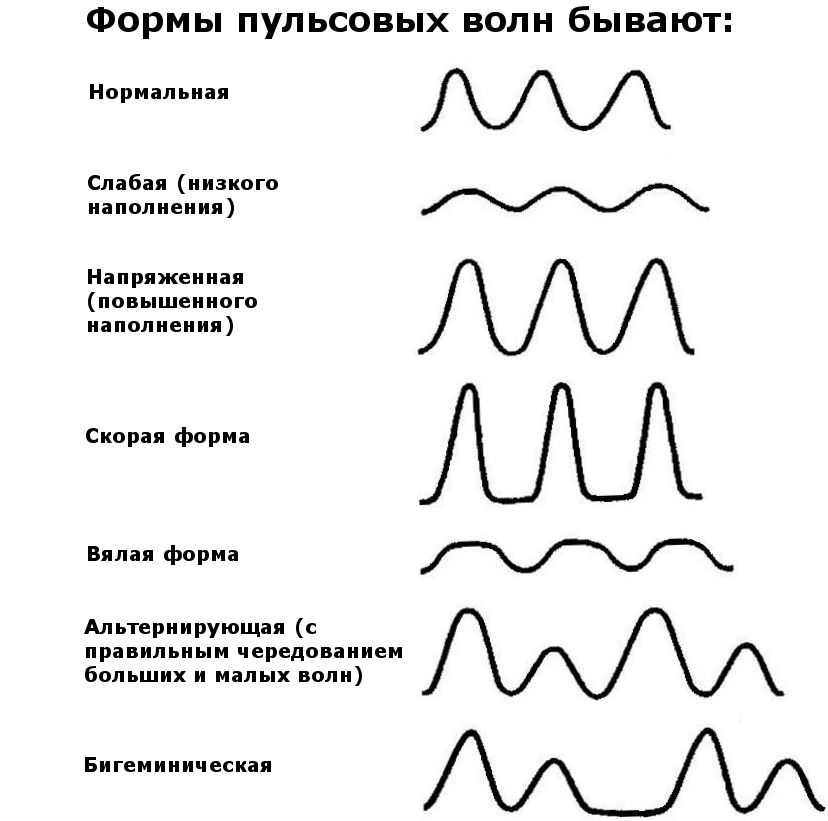 Heart rate
Heart rate What should be the pulse rate per minute of the pulse in a healthy adult person at rest, while running, walking, training:
| rate | load | |
| 100-110 | Very light load | |
| Quick step | 110-130 | Light load |
| Jogging | 130-150 | Average load |
| Running | 150-170 | Heavy load |
| Running with load( maximum) | 170-190 | Very heavy load |
What pulse is normal for a man and a woman at 30, 40, 50, 60 years old?
Heart rate at woman:
| Age of woman | Minimum normal number of strokes | Normal number of strokes( average) | Maximum normal number of strokes |
| From 20 to 30 years | 60 | 65 | 70 |
| From 30 to 40 years | 70 | 73 | 75 |
| From 40 to 50 years | 70 | 75 | 80 |
| From 50 to 60 years | 80 | 83 | 85 |
| From 60 to 70 years | 83 | 85 | 87 |
| Over 70 years | 83 | 85 | 88 |
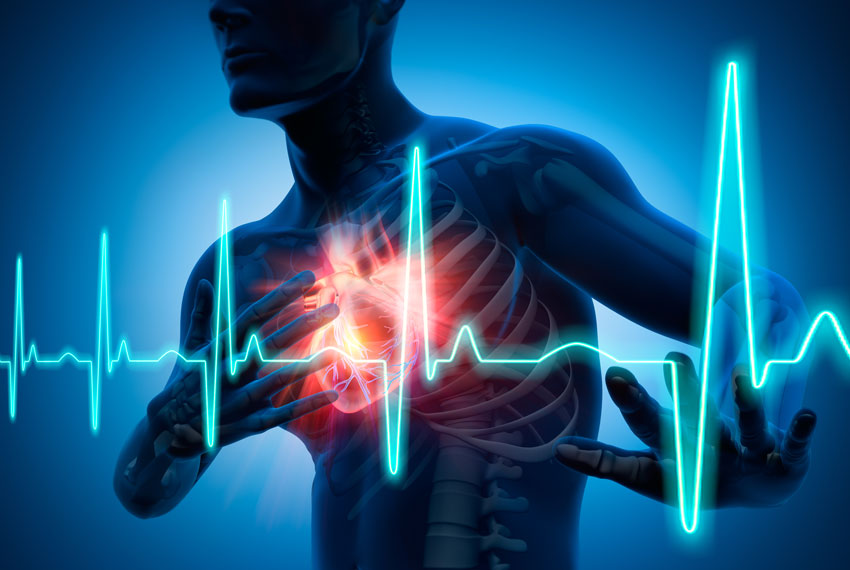 Heart Rate
Heart Rate What is the normal pulse rate for a child at 6, 7, 8, 9, 10, 11, 12 years old?
| Age of child | Minimum( normal) number of strokes | Average( normal) number of strokes | Maximum( normal) number of strokes |
| 6 years | 90 | 92 | 95 |
| 7 years | 83 | 85 | 90 |
| 8 years | 80 | 83 | 85 |
| 9 years | 80 | 83 | 85 |
| 10 years | 78 | 80 | 85 |
| 11 years | 78 | 82 | 85 |
| 12 years | 75 | 80 | 82 |
14_15_16_17"> Which pulse is normalat the teenager in 13, 14, 15, 16, 17 years?
| Age of child | Minimum( normal) number of strokes | Average( normal) number of strokes | Maximum( normal) number of strokes |
| 13 years | 72 | 75 | 80 |
| 14 years | 72 | 75 | 78 |
| 15 years | 70 | 73 | 76 |
| 16 years | 68 | 70 | 72 |
| 17 years | 65 | 67 | 70 |
Where can I feel the pulse?
On the human body, the pulse is probed in several places and therefore it can be measured:
- On the wrist - the pulmonary artery
- The ulnar artery - look for the ulnar artery that is located in the elbow bend.
- In the armpit
- On the temples
- The temporal artery above the eyebrows
- Neck - the location of the carotid artery
- The angle of the mouth( edge of the jaw) - there one can feel the facial pulse.
- Plow - here you can feel the femoral pulse
- Under the knee ( where the leg is bent the popliteal artery).
- Foot or arch of the foot
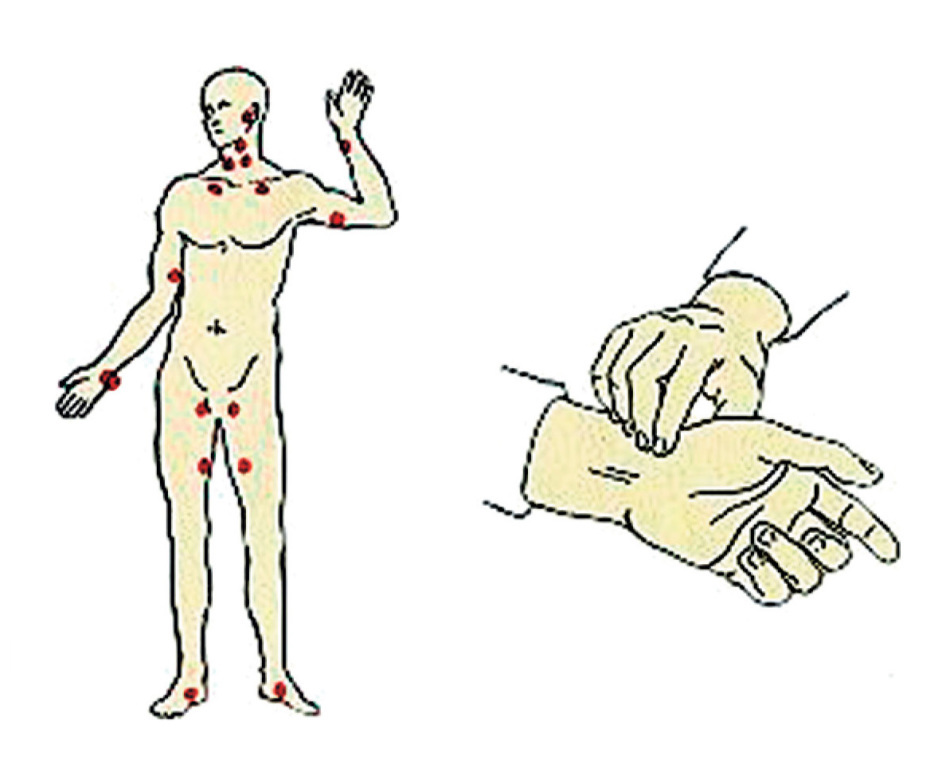 Where to measure the pulse?
Where to measure the pulse? How to measure the pulse on the arm on your wrist yourself and determine the pulse on the carotid artery?
Measuring the pulse is very simple:
- You will need to have a watch that measures the time and number of heartbeats for a certain period of time.
- Calm down and sit down, find a quiet and peaceful place.
- Place the index and middle finger of the right arm in place of the pulsating artery( wrist, neck, or other part of the body).
- Check the time( 30 to 60 seconds) and count the number of beats during this time period.
- Check the data with the
